Australian Wildlife Rescues
Dedicated to rescuing, rehabilitating, and releasing native Australian wildlife back into their natural habitats.
Dedicated to rescuing, rehabilitating, and releasing native Australian wildlife back into their natural habitats.
Comprehensive care for Australia's precious native wildlife
Our specialized teams operate 24/7 to respond to wildlife emergencies across New South Wales. We provide immediate first aid and safe transport for injured, orphaned, or displaced native animals. Our rescue protocols are designed to minimize stress and prevent further injury during the critical rescue phase. Each year, we respond to over 2,000 wildlife emergencies, with our fastest response times averaging under 45 minutes in the Sydney metropolitan area.
Our state-of-the-art rehabilitation facility in Bondi provides specialized care tailored to each species' unique needs. We employ wildlife veterinarians, nutritionists, and behaviorists to ensure comprehensive recovery. Animals receive species-appropriate enclosures, nutritional support, and therapeutic treatments. Our rehabilitation programs focus on both physical and psychological recovery, preparing animals for their eventual return to the wild while maintaining their natural behaviors and instincts.
The ultimate goal of our work is returning rehabilitated animals to their natural habitats. Our release programs involve careful habitat assessment, timing considerations, and post-release monitoring. We coordinate with conservation authorities to identify suitable release sites that offer adequate food, water, and shelter. For certain species, we implement soft release strategies, providing temporary support while animals readjust to wild living. Our tracking programs collect valuable data on post-release survival rates and movement patterns.
Knowledge is a powerful conservation tool. We conduct regular workshops, school visits, and community events to raise awareness about Australian wildlife and their needs. Our education programs cover wildlife-friendly gardening, how to safely assist injured animals, and the importance of habitat preservation. We've reached over 15,000 school children through our educational initiatives, fostering the next generation of wildlife advocates. Our online resources provide 24/7 access to information about coexisting harmoniously with native wildlife.
Beyond individual animal care, we work to protect and restore vital wildlife habitats. Our conservation initiatives include tree planting days, invasive species management, and habitat corridor creation. We partner with landowners, councils, and conservation groups to implement wildlife-friendly infrastructure and development practices. Through our habitat protection efforts, we've helped secure over 500 hectares of crucial wildlife habitat and planted more than 25,000 native trees that provide food and shelter for numerous species.
Our research programs contribute valuable data to wildlife conservation science. We collaborate with universities and research institutions to study wildlife health, behavior, and population dynamics. Our rescue database provides insights into urban wildlife challenges and emerging threats. Current research projects include tracking the impact of climate change on koala populations, studying road trauma patterns in kangaroos, and developing improved rehabilitation protocols for echidnas. Our findings are regularly published in scientific journals and inform best practices in wildlife care.
The journeys of recovery that inspire our continued work
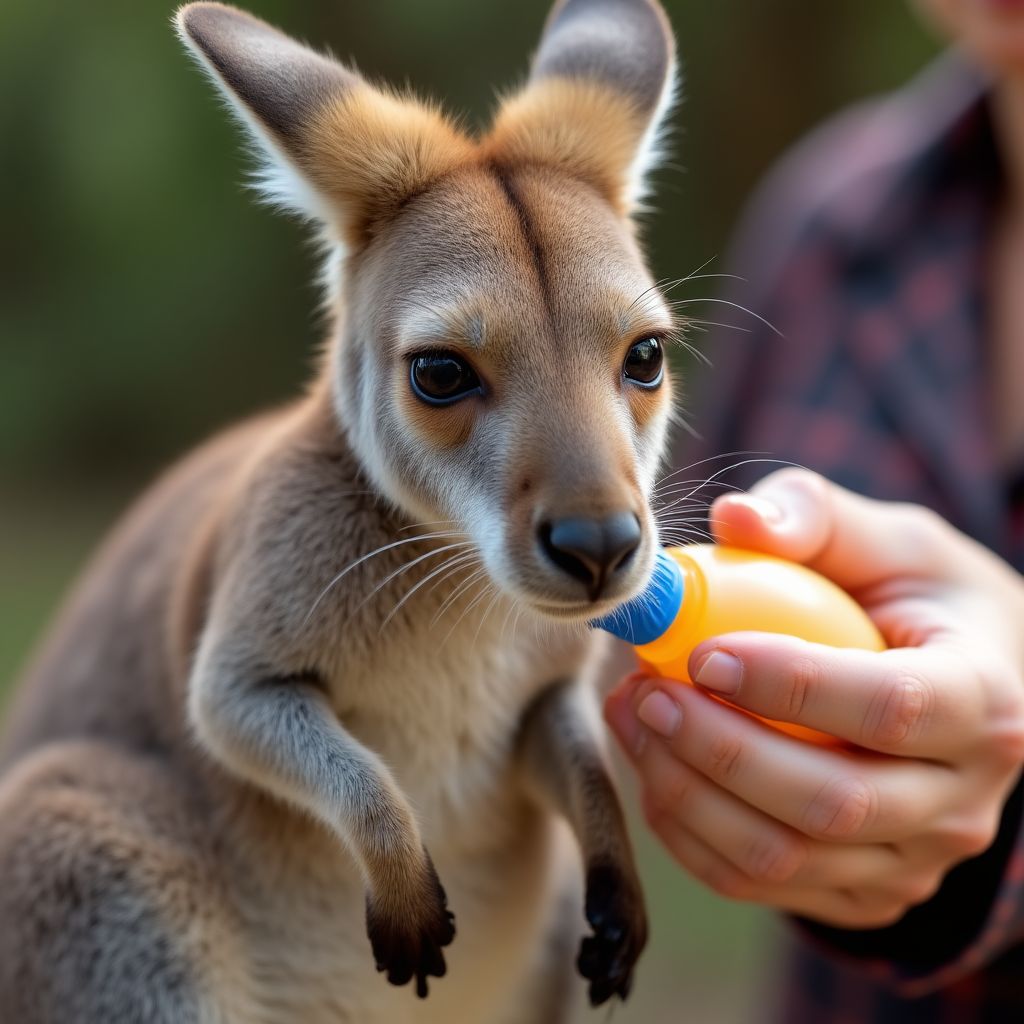
When a motorist discovered a deceased female kangaroo on a highway outside Sydney, they noticed movement in her pouch. Inside was a 4-month-old joey we named Hoppy, weighing just 950 grams and completely dependent on care. Our specialized marsupial team created a temperature-controlled artificial pouch and implemented a rigorous 4-hour feeding schedule using a specialized formula that mimics kangaroo milk. Over eight months, Hoppy progressed from bottle feedings to independent foraging while living in a soft-release enclosure with other joeys. After successful pre-release assessments, Hoppy was released into a protected conservation area where our tracking showed successful integration with a wild mob. Today, Hoppy roams freely in the Australian bush, a testament to the power of dedicated rehabilitation.
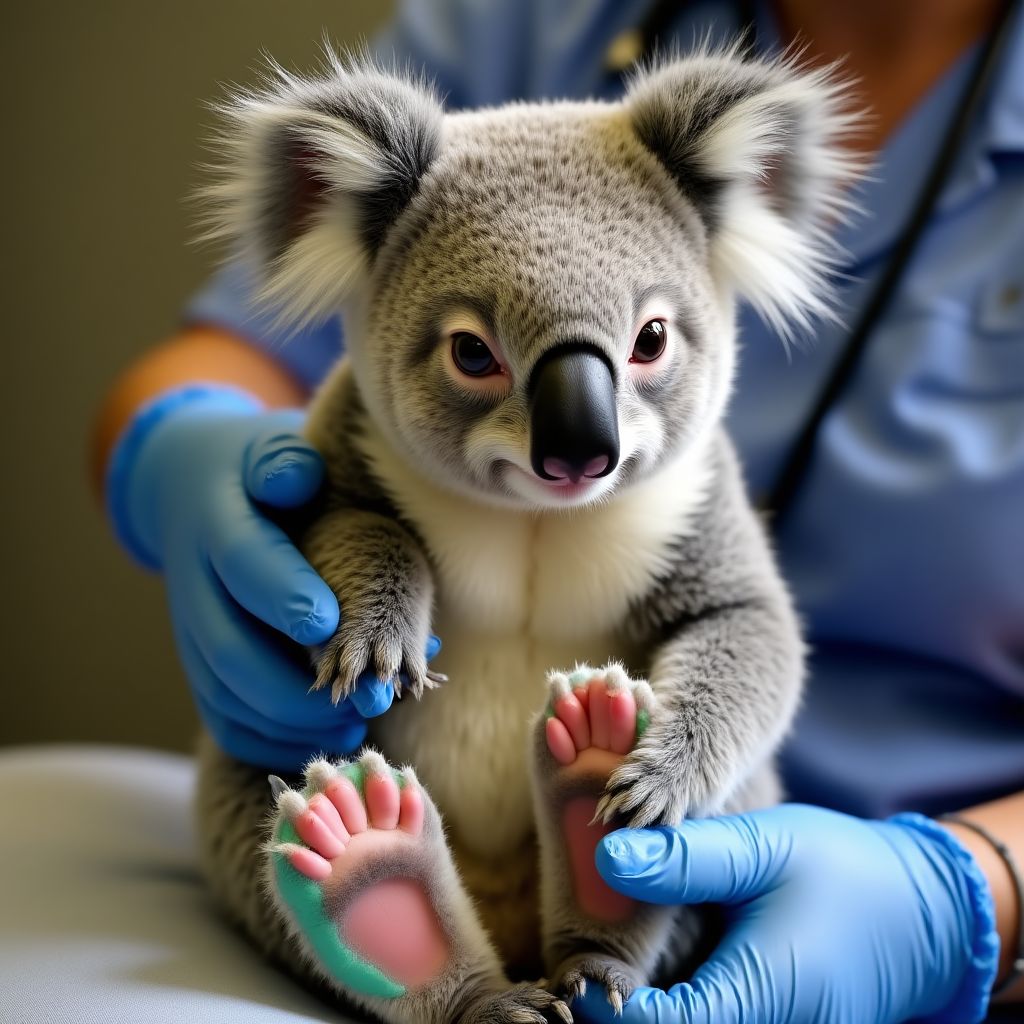
Eucalyptus (Eucy) was found clinging to a charred tree following the devastating 2019-2020 bushfires that swept through New South Wales. With severe burns on all four paws, dehydration, and smoke inhalation, his prognosis was initially uncertain. Our veterinary team administered specialized burn treatments, pain management, and respiratory therapy. Eucy required daily wound care and bandage changes, with each session carefully designed to minimize stress. His recovery was complicated by a secondary respiratory infection that required a course of targeted antibiotics. Over 14 weeks, Eucy's wounds gradually healed, and he began climbing again in his specialized rehabilitation enclosure. After four months of intensive care, Eucy was deemed ready for release into a protected koala sanctuary where he continues to thrive, contributing to the recovery of koala populations in post-bushfire habitats.
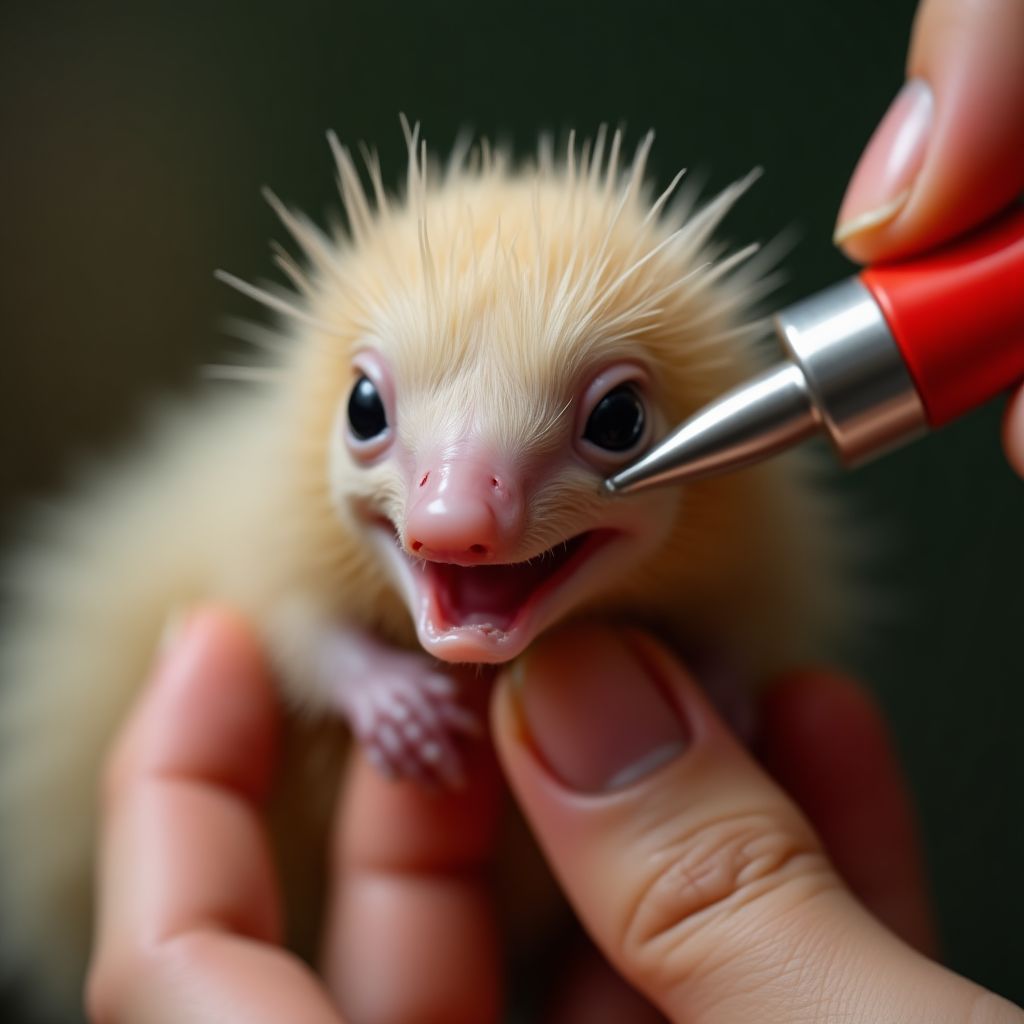
Spike came to us as a tiny echidna puggle, weighing just 112 grams after his mother was hit by a car. Raising an echidna puggle is one of the most challenging wildlife rehabilitation tasks, requiring specialized knowledge and meticulous care protocols. Our team created a temperature-controlled burrow environment and developed a custom feeding regimen using a specialized formula delivered through a modified syringe to accommodate the puggle's unusual snout. For three months, Spike received feedings every 48 hours, mimicking the natural feeding cycle of wild echidnas. As he grew, we gradually introduced insects and trained him to forage using his sensitive snout. After five months in care, Spike had developed all the skills necessary for wild survival and was successfully released into a protected bushland reserve with suitable soil types for digging and abundant insect populations.
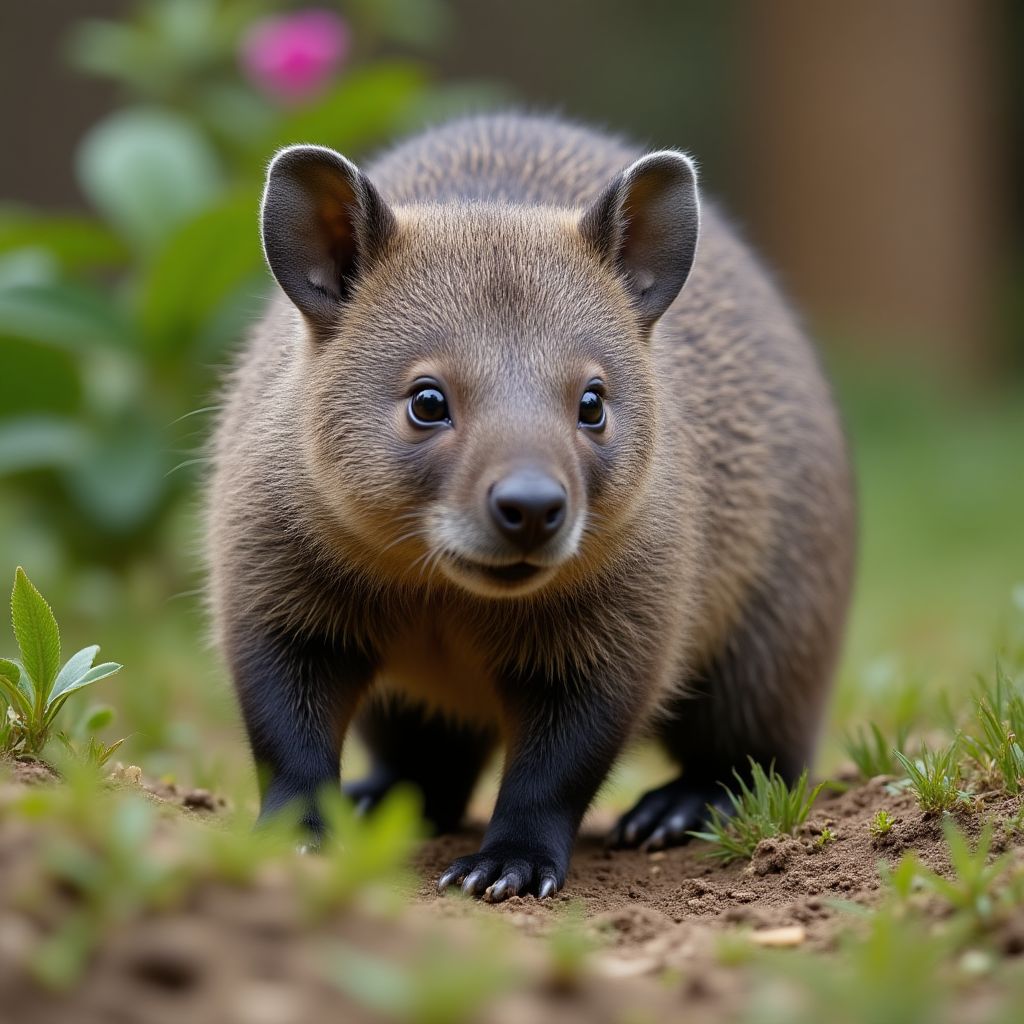
When land development began near a wombat colony, Burrows was found disoriented and injured after his burrow system collapsed. The young male wombat suffered from a concussion, dehydration, and stress-related health issues. Our wildlife veterinarians conducted comprehensive diagnostics, revealing internal bruising that required careful monitoring and pain management. Wombats are notoriously difficult patients due to their strong-willed nature and specific environmental needs. We constructed a specialized rehabilitation burrow that mimicked natural conditions while allowing for medical observation. Over several weeks, Burrows recovered physically while our behavioral specialists worked to ensure he maintained his wild instincts. After three months of rehabilitation, we identified a suitable release site in protected bushland with established wombat populations. Post-release monitoring confirmed Burrows successfully established a new burrow system and integrated with the local wombat community.
A science-based approach to wildlife rehabilitation
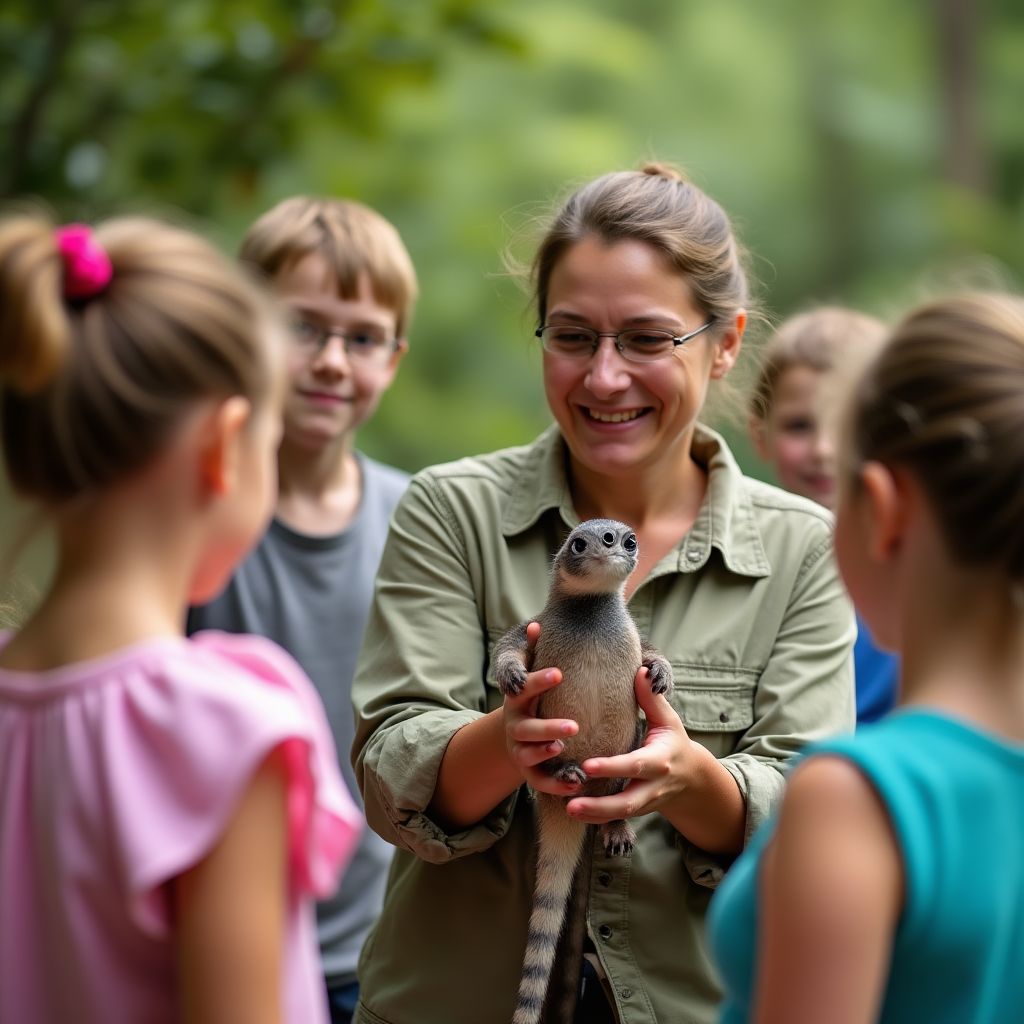
Our rescue process begins with careful assessment of each animal's condition and circumstances. Trained rescuers use species-specific handling techniques to minimize stress while safely securing injured wildlife. Our specialized transport vehicles are equipped with temperature control systems and stabilization equipment to ensure animals reach our care facility in optimal condition. Every rescue follows strict protocols developed with veterinary guidance to protect both the animal and rescue personnel.
Upon arrival, animals undergo comprehensive veterinary assessment including physical examination, diagnostic imaging, and laboratory testing when necessary. Our wildlife veterinarians develop individualized treatment plans addressing specific injuries and underlying health conditions. We employ cutting-edge treatments including specialized wound management, nutritional support, physiotherapy, and pain management tailored to each species' unique physiology and needs.
As medical treatment progresses, animals transition to our rehabilitation facilities designed to promote natural behaviors while providing necessary support. Species-appropriate housing mimics natural habitats while allowing monitoring and care. For young animals, we implement specialized rearing protocols to prevent imprinting and ensure development of essential survival skills. Behavioral assessment is ongoing throughout rehabilitation to ensure animals maintain wild instincts and appropriate responses to environmental stimuli.
Before release, each animal undergoes thorough evaluation including physical fitness, foraging ability, and appropriate behavioral responses. Release sites are carefully selected based on habitat quality, food availability, existing wildlife populations, and protection status. For many species, we utilize soft-release techniques providing temporary support during the transition to independent living. Post-release monitoring through visual observation, tracking devices, and community reporting helps us assess outcomes and refine our rehabilitation methods.
Valuable information from our conservation partners
Comprehensive resources on native wildlife health, treatment protocols, and research findings. Includes specialized care guides for veterinarians and wildlife carers.
Visit ResourceAustralia's largest wildlife rescue organization providing emergency advice, rescue services, and educational resources for helping native animals in distress.
Visit ResourceLeading conservation organization dedicated to protecting endangered wildlife and their habitats through effective land management and scientific research.
Visit ResourceCreating lasting positive impact for Australian wildlife
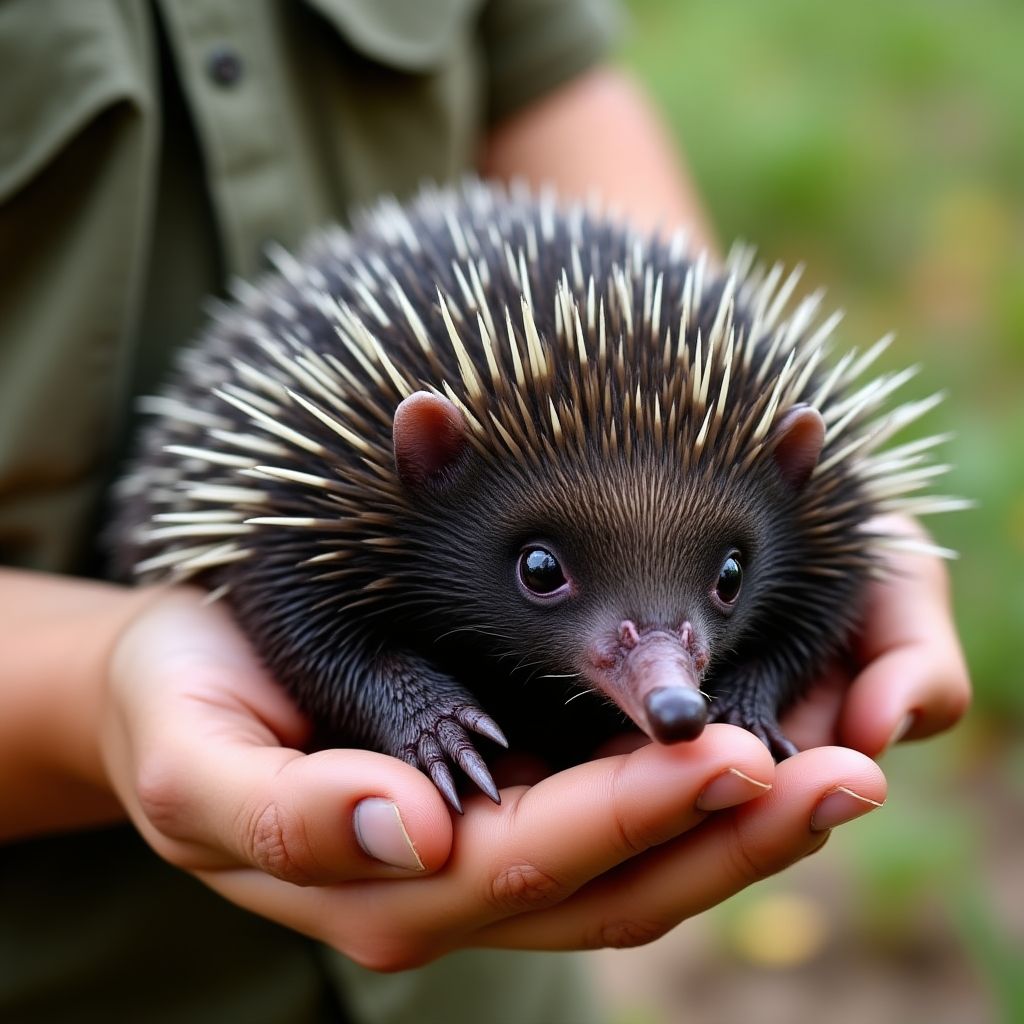
Our rescue center operates with a minimal environmental footprint. We've installed solar panels that generate 80% of our facility's energy needs and implemented rainwater harvesting systems that collect over 150,000 liters annually for animal care and garden maintenance. Our rehabilitation enclosures are constructed from sustainable materials, and we practice comprehensive waste management including composting, recycling, and responsible medical waste disposal. By modeling sustainable practices, we extend our conservation mission beyond direct animal care to broader environmental stewardship.
We recognize that lasting wildlife protection requires community engagement. Our volunteer program trains local residents in wildlife rescue and rehabilitation, creating a network of informed advocates. We partner with Indigenous communities to incorporate traditional ecological knowledge into our conservation strategies, honoring ancient connections to country and wildlife. Through our education outreach, we've helped numerous property owners implement wildlife-friendly landscaping and practices that create urban wildlife corridors and habitat islands.
Our commitment to sustainability includes advancing wildlife rehabilitation science through research partnerships and data collection. We maintain detailed records of all cases, contributing to a broader understanding of threats facing Australian wildlife. Current research projects include developing improved nutrition protocols for orphaned marsupials, studying the impacts of microplastics on native species, and testing innovative treatment approaches for common wildlife injuries. By sharing our findings with the global wildlife rehabilitation community, we help improve outcomes for animals beyond our direct care.
Celebrating our commitment to wildlife conservation
Australian Wildlife Society, 2025
Recognized for our innovative rehabilitation protocols that have significantly improved survival rates for critically injured wildlife. The judging panel particularly highlighted our specialized care program for burn victims following the bushfire season, which has been adopted by multiple wildlife care centers across Australia.
NSW Environmental Trust, 2022
Awarded for our extensive community education initiatives that have reached over 15,000 residents through workshops, school programs, and public events. The award acknowledged our success in creating a network of trained community first responders who can provide appropriate initial care for wildlife emergencies.
International Wildlife Rehabilitation Council, 2021
Received for our groundbreaking study on nutritional requirements of orphaned marsupials, which established new standards for formula composition and feeding protocols. The research demonstrated a 30% improvement in growth rates and health outcomes for hand-raised joeys using our optimized nutrition program.
Volunteering Australia, 2025
Honored for our comprehensive volunteer training and management system that has engaged over 200 active community members in wildlife rescue and rehabilitation. The award recognized our tiered skill development pathway that allows volunteers to progress from basic care assistance to specialized rescue and treatment roles.
Green Building Council of Australia, 2022
Awarded for the eco-friendly design and operation of our rehabilitation center, which incorporates solar energy, rainwater harvesting, and sustainable building materials. The facility was recognized as a model for environmentally responsible wildlife care that minimizes resource consumption while maximizing animal welfare.
Australian Conservation Foundation, 2021
Recognized for our compelling storytelling and media campaigns that have raised public awareness about wildlife conservation challenges and successes. Our documentary series "Second Chance Wild" reached millions of viewers globally, inspiring increased support for wildlife protection initiatives and volunteer engagement.
Moments captured from our rescue work
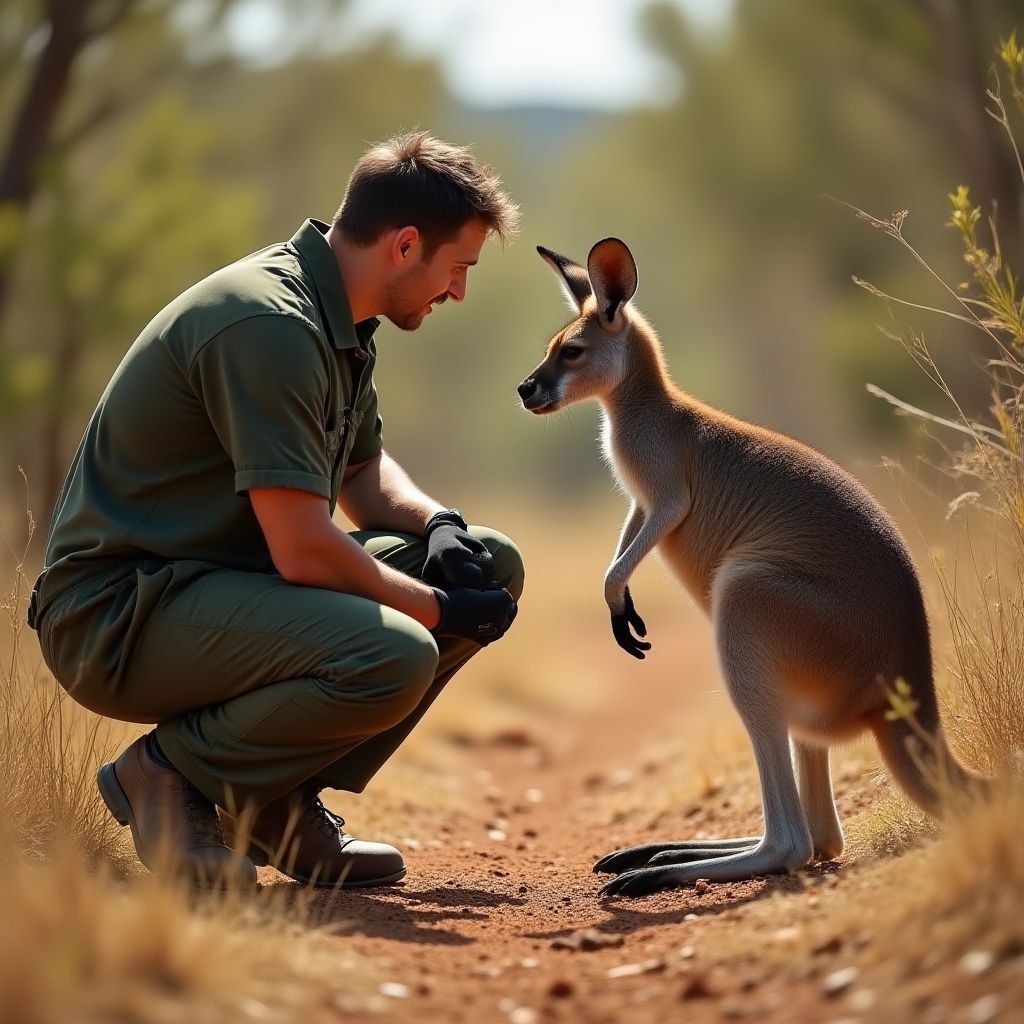
Our team carefully approaching an injured eastern grey kangaroo during a rescue operation near Blue Mountains National Park.
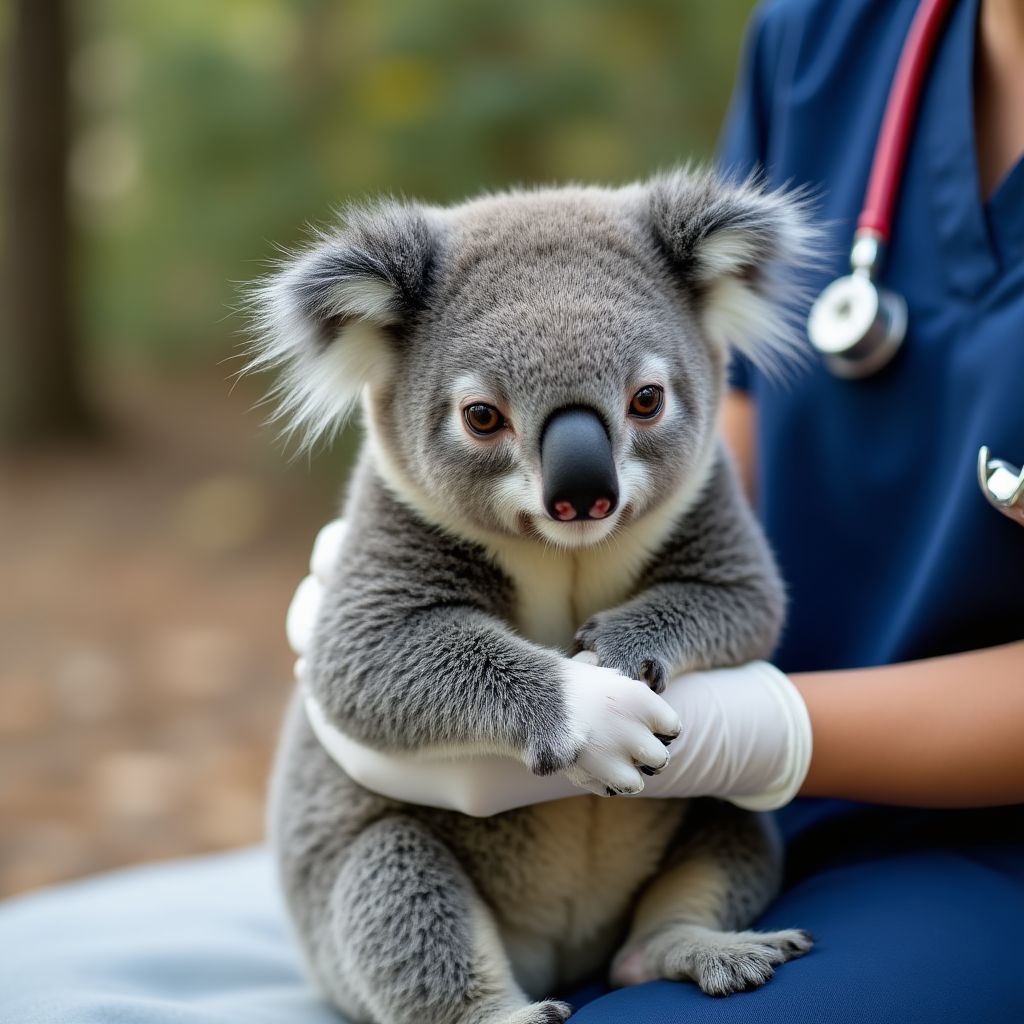
Our wildlife veterinarian Dr. Sarah Chen performing specialized wound treatment on a koala affected by the recent bushfires.
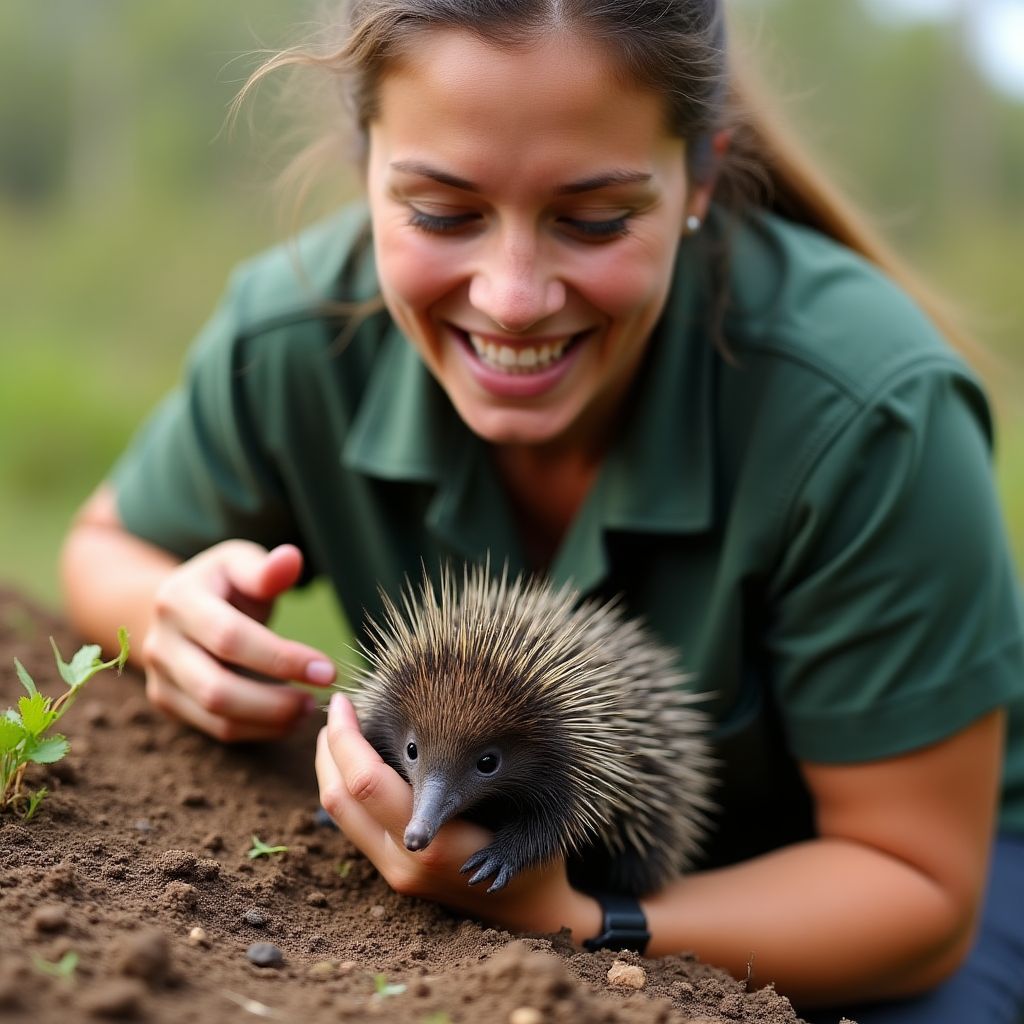
A fully rehabilitated echidna being released back into its natural habitat after three months of specialized care at our center.
Make a difference in wildlife conservation
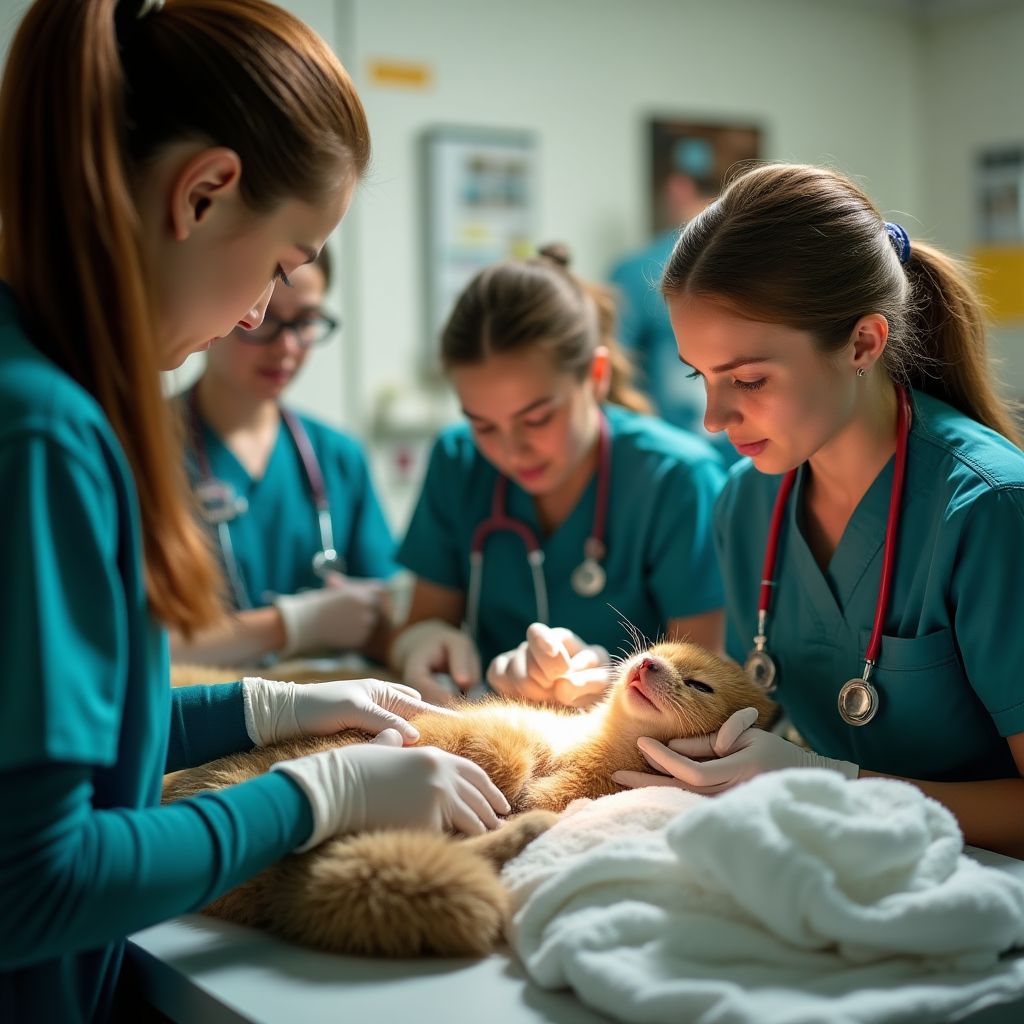
We're seeking an experienced wildlife veterinarian passionate about native Australian species. The role involves diagnosing and treating injured wildlife, developing rehabilitation protocols, and training staff and volunteers in basic veterinary care. Applicants should have at least 3 years of experience working with native fauna and strong emergency medicine skills.
Apply NowThis key position oversees our wildlife rehabilitation programs, managing care plans for animals in recovery and coordinating release assessments. The ideal candidate will have extensive experience in wildlife rehabilitation, excellent organizational skills, and the ability to train and supervise volunteers in animal care protocols.
Apply NowHelp us spread awareness about wildlife conservation through educational programs and community engagement. This role involves developing and delivering wildlife education sessions for schools, community groups, and the general public. Strong communication skills and knowledge of Australian wildlife are essential.
Apply NowCan't join us full-time? Our volunteer program offers flexible opportunities to contribute to wildlife rescue and rehabilitation. After completing our training program, volunteers can assist with animal care, rescue operations, facility maintenance, or community education based on their skills and interests. We welcome volunteers of all backgrounds who share our passion for Australian wildlife.
Become a VolunteerReach out to report wildlife in need or support our mission
Our rescue line is available 24/7 for wildlife emergencies. Please provide your location and details about the animal in need.
17 Ocean Drive
Bondi Beach, NSW 2026
Australia
Open for visitors:
Wednesday to Sunday, 10:00 AM - 4:00 PM